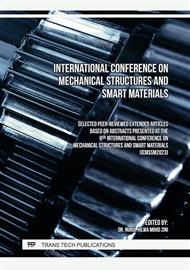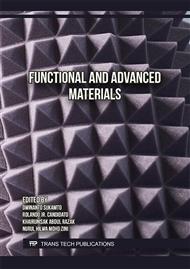p.59
p.65
p.79
p.89
p.97
p.105
p.113
p.125
p.133
The Effect of Electrode Voltage on Acetylene Plasma Deposition Particles during the Preparation of PECVD Carbon Film Based on PIC-MCC Simulation
Abstract:
At present, the preparation of conductive and corrosion-resistant carbon coatings by plasma-assisted chemical vapor deposition (PECVD) has received extensive research. In this paper, the acetylene plasma model was established by using the Particle in Cell/Monte Carlo method (PIC/MCC) to study the influence of different electrode voltages on the composition and particle energy of deposited particles, and explore the corresponding relationship between acetylene gas and deposited particles. The results show that increasing the electrode voltage can reduce the density of acetylene particles in the plasma, increase the ionization rate of acetylene, and reduce the particle density of C2 and CH groups. The energies of C2H2 and CH particles increase with the increase of voltage, while the energies of C2 and H particles are basically stable and not affected by the voltage. Keywords: PECVD, PIC/MCC, carbon film, electrode voltage, acetylene plasma, deposition particles.
Info:
Periodical:
Pages:
97-103
Citation:
Online since:
October 2023
Authors:
Keywords:
Price:
Сopyright:
© 2023 Trans Tech Publications Ltd. All Rights Reserved
Share:
Citation:



